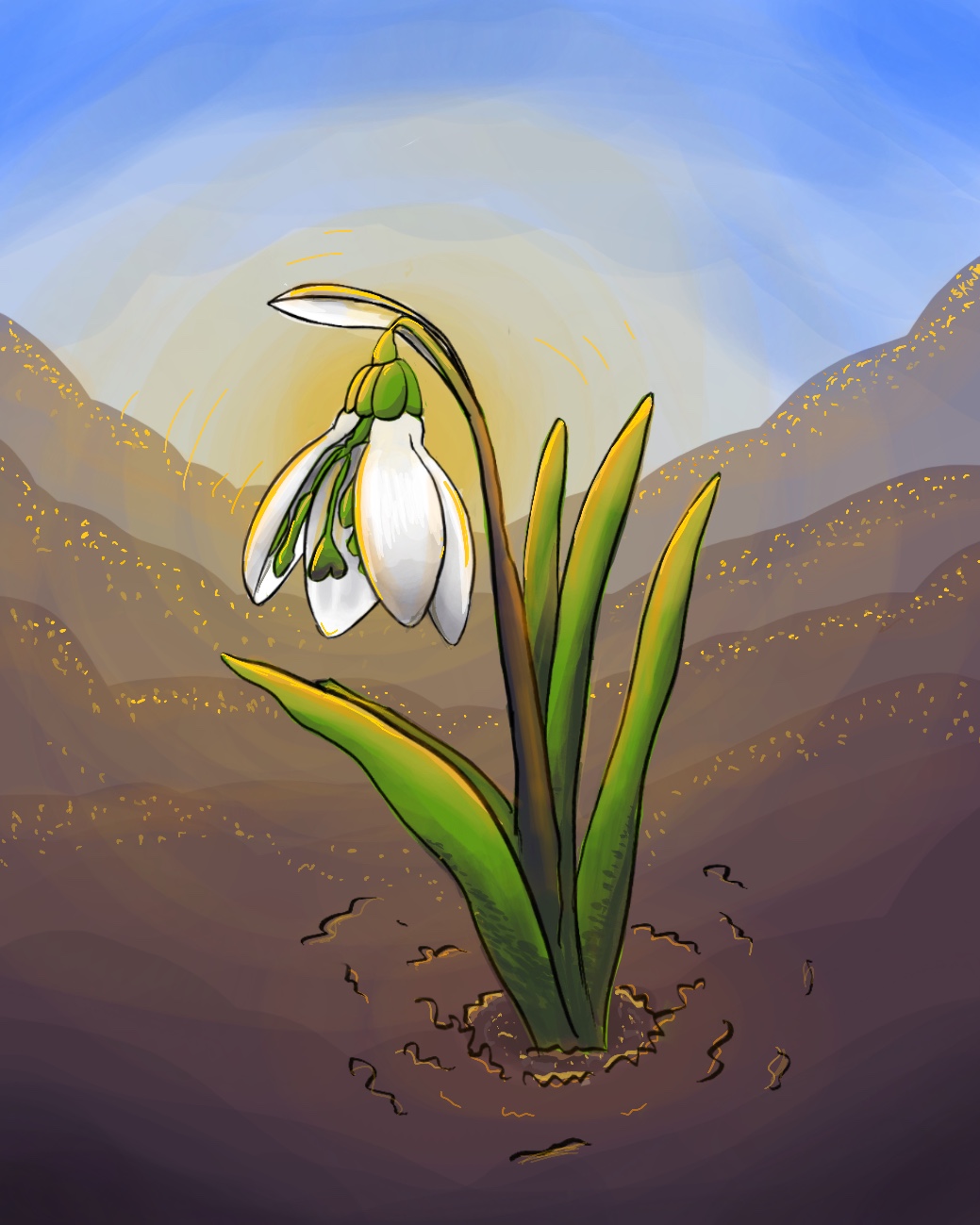The Bloom after the Frost
The instant the frost starts to melt has a certain, almost mystical, quality. It seems as though the world is holding its breath, and suddenly, almost imperceptibly at first, life begins to move. A bird sings, a bud appears, and the soil gradually changes from bare to lovely.
In March 2024, after a hard winter, I stood in my garden and stared at the bare ground, wondering if anything could ever sprout again. That morning, the frost clung obstinately to the windows as though it had no intention of going, and the air was acrid. In Canada, winters come early and go late. Moving back to Canada, not so long ago, I noticed the frost more, and how people yearn for spring to come. It brought to mind the several occasions in which life had felt like that a period of loss and silence, when hope appeared to be buried beneath the chill. However, I was about to look away when I noticed a small green sprout. It had persevered in spite of everything, serving as a silent reminder that life may blossom even after the frost.
The world is replete with tales of people overcoming personal loss and groups recovering from natural calamities, all of which reinforce the same idea: hope is the flower and resilience is the seed. However, the bloom following the frost is more than just a seasonal shift: it is a symbol of resiliency and the discovery of beauty and life in the face of adversity.
My favorite flower is the snowdrop. I always liked the thought of it being the first flower to bloom after winter. The first snowdrop to emerge from the chilly ground at this time of year is a welcome sight and a signal that spring has arrived.
It’s supposed to represent fresh starts, comfort, and hope.
I have always admired the metaphoric comparison between the seasons of the year and the seasons of our life! Spring’s symbolism serves as a moving reminder that life is more than just winter. It is possible that winter may come upon you. Setbacks in finances, family, or health have an impact. But my friends, keep in mind that spring will arrive soon, even after the most gloomy winters you have ever experienced.
Earthquakes leave behind unfathomable loss, damaged homes and scarred landscapes. However, communities frequently find remarkable resilience and strength in the aftermath. Pakistan, a country that has seen earthquake destruction as well as other losses before, has important lessons to teach about hope and rebirth. Families get together to rebuild as the dust settles, reestablishing schools, building homes, and replanting fields. In addition to physical structures, this process involves mending mental scars and regaining one’s purpose. Recovery is not a solitary act: it is the strength of the community that helps us rebuild. Children play, flowers blossom, and craftspeople continue their work amid the wreckage, demonstrating that life goes on.
Growing up in Pakistan, I saw a lot of people going through unimaginable hardships every day, especially the children, like not being able to go to schools or not getting their needs fulfilled. But there are always smiles on their faces, and seeing them laugh and smile through the day allows the kids to see rays of hope which are seen in their smiles, that their hardships will lead them to something even better.
As university students, first year can be hard. It can be harder on students who come from different countries in the world, as everything is new to them. This was true for me. Even though I didn’t have any language issues, trying to understand the system, documents, university policies, and how to manage all that work was really challenging n first year, especially since everything was online, and I didn’t know anything or anyone to ask for help. However, after some time, you start understanding everything and reaching out to people can be very helpful, especially in first year. If you’re skeptical about anything, ask! Asking peers or just talking to others about your hardships can bring a lot of hope in your life.
Despite their diverse religious and cultural origins, Christmas, Eid, and Holi all convey the same message: adversity and sacrifice are inevitable, but they also open the doors to development, hope, and community. These festivities act as a kind of “bloom after the frost,” bringing people together via their common humanity and the hope of better times to come.
Christmas remains a time of giving, happiness, and fresh starts. Families reunite and reestablish their relationships, communities band together to help those in need, and people consider the possibility of better days in the future. Christmas teaches us that hope endures even in the dead of winter, whether it is via charitable deeds or the symbolic glow of candles and sparkling lights. Following the month-long fast of Ramadan, Eid al-Fitr is a time to honour self-discipline and spiritual development. Eid signifies the flowering that follows the month-long fast: a resurgence of compassion, thankfulness, and faith. The month of fasting is a personal “frost,” a period of sacrifice and introspection. Families get together to worship, eat together, and donate to the less fortunate, creating a feeling of hope and camaraderie. After winter’s frost, Holi is a celebration of rebirth and a festival of colours. Holi, which signifies the entrance of spring and the blossoming of nature, has its roots in ancient mythology of victory against evil. To represent the shedding of negativity and the acceptance of fresh starts, people congregate to dance, toss colourful powders, and forgive past wrongs.
The ongoing tenacity of the human spirit—across religions, regions, and eras—is highlighted by this diverse tapestry of cultural traditions. The bloom always appears, regardless of how cold it gets.
Regaining hope after adversity can be one of the most difficult yet transforming experiences. It doesn’t happen right away; rather, it frequently develops through small actions, introspection, and relationships with other people. For students like us, it might be daunting to find hope after adversity, but it’s crucial to keep in mind that challenges are a necessary component of progress.
Little actions can have a tremendous impact, even when university is difficult, assignments are piling up, or personal issues are weighing you down. Seek assistance from friends or instructors, take mental pauses, and acknowledge and appreciate your accomplishments, no matter how minor. Remind yourself that every obstacle you encounter can lead to growth and new opportunities, just as the frost eventually melts to expose fresh life. The coldest winters will always give way to spring, so never lose hope that you can triumph.
The flowering after the frost is a cycle of life, not just a tale. No matter how severe, every frost holds the possibility of rebirth. That promise is celebrated in this issue of the magazine. It’s a compilation of tales that demonstrate that despite the length and severity of winter, blossom will always arrive, bringing beauty, hope, and the opportunity to begin afresh. Maybe when you’re walking, you’ll find a flower sticking through the pavement, or a bud growing after the snow.

